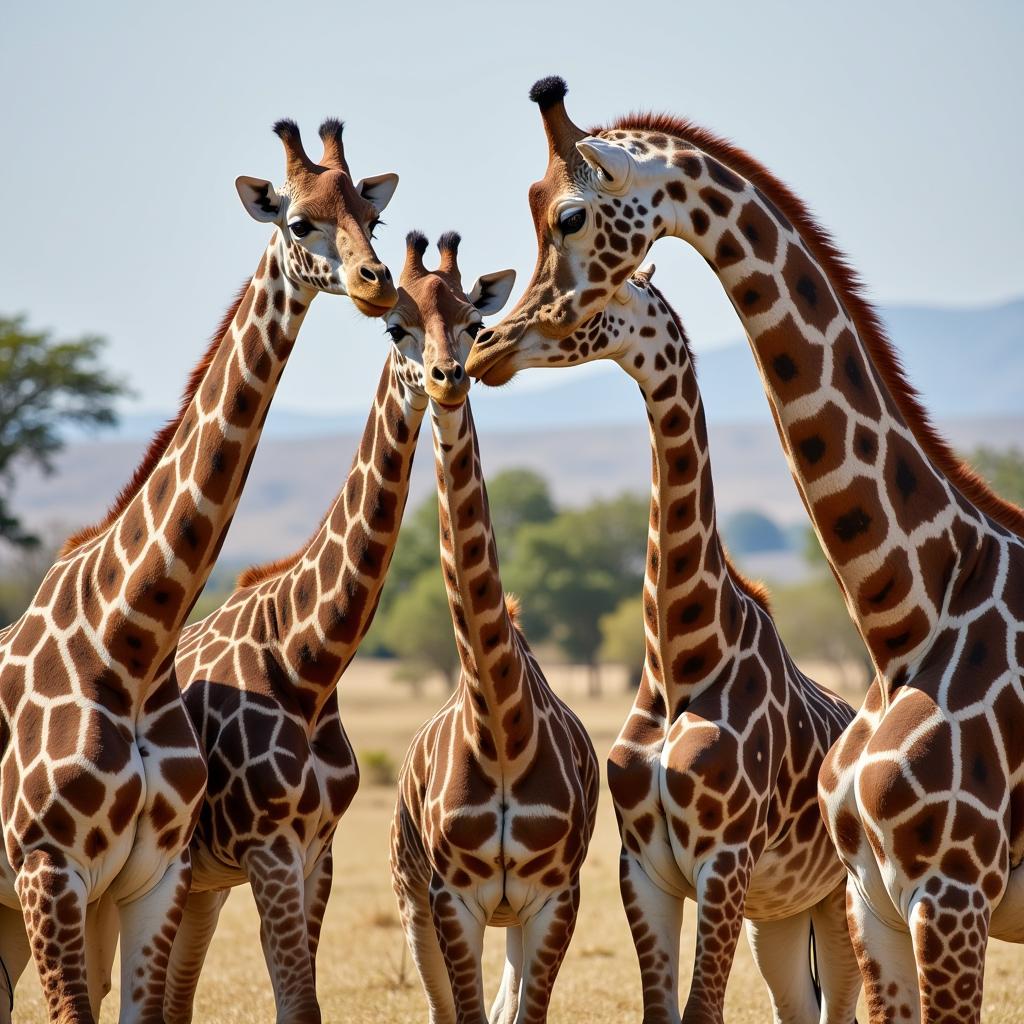Exploring the Beauty of African Landscape Painting
African Landscape Painting offers a unique window into the diverse and breathtaking scenery of the continent. From the vibrant savannas to the arid deserts, and from bustling cityscapes to tranquil village scenes, these artworks capture the essence of Africa’s natural beauty and cultural richness. This exploration delves into the captivating world of African landscape painting, highlighting its history, styles, and significance.
A Journey Through the History of African Landscape Painting
The tradition of landscape painting in Africa has deep roots, interwoven with the continent’s history and cultural expressions. While early forms of art often focused on human figures and spiritual themes, the appreciation for natural surroundings gradually emerged as a distinct subject. The influence of European artistic traditions in the colonial era further shaped the development of African landscape painting, introducing new techniques and perspectives. However, African artists maintained their unique vision, blending indigenous artistic sensibilities with external influences to create a distinctly African aesthetic. You can find more information about African art at about african art.
Early Influences and Indigenous Artistic Traditions
Before the widespread adoption of canvas and oil paints, African landscapes were often depicted through rock art, murals, and textile designs. These early forms of art showcase a profound connection to the natural world, reflecting the spiritual beliefs and daily lives of various communities. They offer valuable insights into how indigenous populations perceived and interacted with their surroundings, providing a glimpse into the origins of African landscape painting.
The Impact of Colonialism and the Emergence of New Styles
The arrival of European colonizers introduced new artistic materials and techniques, significantly impacting the development of African landscape painting. Artists began experimenting with oil paints, watercolors, and canvas, leading to a shift in styles and subject matter. While some artists adopted European artistic conventions, many others integrated these new tools with their existing traditions, creating hybrid forms that reflected the changing cultural landscape.
Diverse Styles and Themes in African Landscape Painting
African landscape painting encompasses a wide array of styles, reflecting the continent’s incredible diversity. From realistic depictions of natural wonders to stylized interpretations of cultural landscapes, these artworks offer a rich tapestry of artistic expression. Themes of spirituality, community, and the interconnectedness of humans and nature often permeate these paintings, giving them a deeper meaning beyond their aesthetic appeal.
Realistic Representations of Nature
Many African artists embrace realism in their landscape paintings, capturing the intricate details and vibrant colors of the natural world. These artworks showcase the beauty of Africa’s diverse ecosystems, from the majestic mountains and lush forests to the vast savannas and arid deserts. Through meticulous brushstrokes and careful observation, these artists transport viewers to the heart of Africa’s natural wonders. For example, African animal pictures are popular among collectors. You can find african animal pictures for sale.
Stylized Interpretations of Cultural Landscapes
Other artists adopt a more stylized approach, incorporating elements of abstraction, symbolism, and cultural narratives into their landscape paintings. These artworks often reflect the spiritual beliefs, social structures, and historical experiences of specific communities. By blending artistic vision with cultural significance, these artists create powerful visual narratives that resonate deeply with viewers. You can find examples of African landscape paintings on canvas at african landscape paintings on canvas.
The Significance of African Landscape Painting
African landscape painting plays a crucial role in preserving and celebrating the continent’s natural and cultural heritage. These artworks serve as a powerful medium for storytelling, education, and cultural exchange, offering a unique lens through which to understand the complex and multifaceted realities of African Life. Moreover, they provide a platform for African artists to express their creativity, share their perspectives, and contribute to the global art scene. If you’re interested in offers related to African and Eastern art, you can check out african eastern abu dhabi offers.
Conclusion
African landscape painting offers a captivating journey through the continent’s diverse landscapes and cultural expressions. From realistic portrayals of nature’s grandeur to stylized interpretations of cultural landscapes, these artworks provide a valuable window into the heart and soul of Africa. By exploring the rich history, diverse styles, and profound significance of African landscape painting, we gain a deeper appreciation for the beauty and complexity of this remarkable continent.
FAQ
- What are the main characteristics of African landscape painting?
- How has colonialism influenced African landscape painting?
- What are some common themes in African landscape painting?
- Who are some notable African landscape painters?
- Where can I find more information about African art?
- What is the significance of landscape painting in African culture?
- How can I purchase authentic African landscape paintings?
Need assistance? Contact us 24/7 at Phone Number: +255768904061, Email: [email protected] Or visit us at: Mbarali DC Mawindi, Kangaga, Tanzania.


